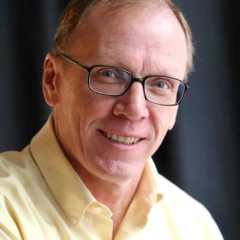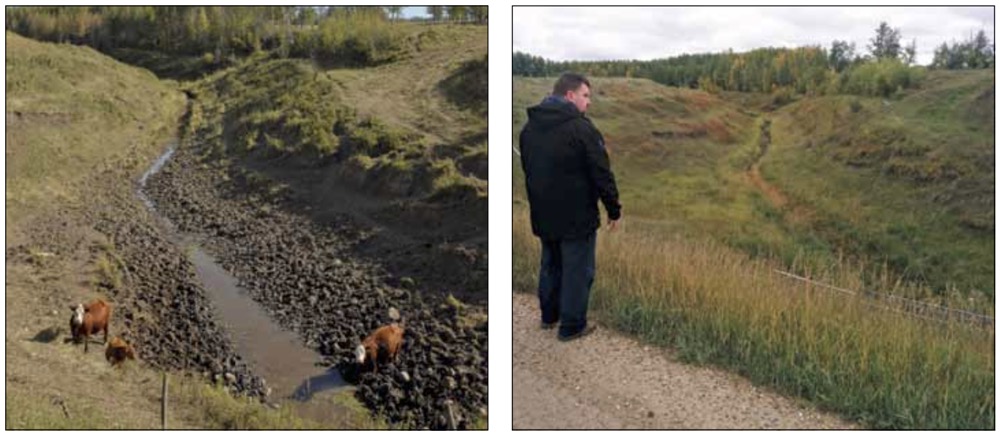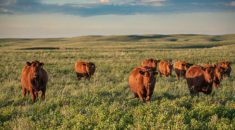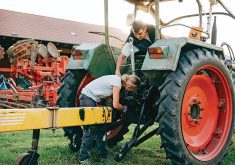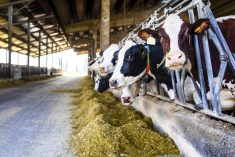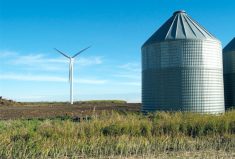The notice in the county newsletter about funding for environmental projects immediately caught the attention of Gerry Taillieu.
“I thought, ‘This is something I need to look into’ because it was offering financial assistance to do something we were already going to do,” said the manager of Tomahawk Cattle Ranch, a 14,000-acre operation in Parkland County.
About 5,000 of those acres were once covered by a shallow lake, which was drained in the 1960s. Prior to seeing that notice in 2012, Taillieu hadn’t heard of ALUS (pronounced Alice and short for Alternative Land Use Services), but the prospect of getting free money was too good to pass up.
Read Also

Farming Smarter receives financial boost from Alberta government for potato research
Farming Smarter near Lethbridge got a boost to its research equipment, thanks to the Alberta government’s increase in funding for research associations.
While the amount was modest — $6,425, which was half the cost of fencing the ‘creek’ — Taillieu has since become an enthusiastic proponent of a program that is catching fire in Alberta.
“There are always things that need to be done and ALUS helps you target those environmentally sensitive areas that you know in your heart you want to protect and it moves them to the top of the list,” said Taillieu, who now sits on an ALUS advisory committee for Parkland County. “When they pay 50 per cent, you can do twice as much — so you’re doubling the impact of your money.”
ALUS arrived in Alberta in 2010 when the County of Vermilion River signed up for a three-year pilot project and set up an advisory committee of local farmers and community members. Parkland joined in 2012 and Red Deer County in 2013, but the pace has quickened in the last year.
“At the end of 2015, we had seven counties and we’ve added three more since the start of the year,” said Christine Campbell, manager of the program’s Western Canada division.
“We’re talking to other counties to join us in 2017. That said, our biggest limitation is funding and we want to grow at a sustainable pace.”
Two big selling points for ALUS are its intense local focus (advisory committees develop criteria for their area and landowners put forward their own proposals) along with its flexibility (there are no easements involved and landowners can opt out whenever they want).
But the surge in interest in Alberta has been driven by two other factors.
The success in Vermilion, Parkland, and Red Deer counties led to the creation of the ALUS Alberta Municipal Alliance, which has a full-time co-ordinator who works with counties to implement their own version of the program. Secondly, a $5-million grant from the W. Garfield Weston Foundation allowed ALUS — which had been operated as a division of Delta Waterfowl — to become a stand-alone organization called ALUS Canada. Over the past year, it has hired 10 staff, including two in Alberta (Campbell and a director of business development).

Donating local
The plan is to expand the program not just through grants from foundations, non-profits, and government, but to also sell ‘ecological services’ credits to companies and individuals. Similar to carbon sequestration credits, the environmental benefits would be measured, verified, and sold on a per-acre basis.
For example, the Tomahawk Cattle Ranch project involved fencing off 37 acres along a portion of drainage channel and the operation receives $37.50 per acre annually as long as the land isn’t being grazed. By getting donors to cover the cost of completed projects, money would be freed up for new ones, which could in turn be used to sell more ecological services credits.
It’s an “exciting” model because it doesn’t rely on taxpayer money and offers companies and individuals a concrete return for their contribution, said Taillieu.
“Eventually, they’ll be reaching out to local funders,” said Taillieu. “It’s great to donate to these big national and international organizations, but it’s also great to donate to local organizations.”
The site of the ALUS project on the ranch (Township Road 510 west of Range Road 43) was chosen because it’s visible from a county road, he added.
“The county organizes tours of the ALUS sites and you can go on those tours, bring your kids, and say, ‘Yeah, we donated to that. We’re helping to protect that.’
“It might be protecting a creek or creating pollinator habitat or re-establishing native prairie — whatever it is, I think that’s really neat to be able to go and see where your money was spent.”
Fencing off creeks and installing solar-powered watering systems has been the most popular project in Alberta, said Campbell.
“We have a lot of cattle farmers who see a lot of benefit in that,” she said. “For a typical fencing and watering system, I’ve seen (ALUS funding) from $2,000 to $15,000, depending on the size of the wetland.”
But all sorts of projects are eligible for funding, she added.
Sound environmental practices are also good for business, said Taillieu, who with son Grant won Alberta Beef Producers’ 2013 environmental stewardship award for their rehabilitation efforts at Tomahawk Cattle Ranch, which they’ve managed since 2001.
“We know that when we look after our environment, it helps us make money — it helps our bottom line,” he said. “By moving our cattle to an off-site watering system, they’re not drinking fouled water, their udders don’t get dirty, and their calves don’t get sick as often. So we’re protecting the drainage (from erosion), we’re helping the water that drains into the North Saskatchewan River stay clean, and we’re getting better productivity from our cattle and making more money.
“There’s just no negative to it.”
While watershed projects and livestock operations have been a major focus, the program is also suited to grain farms, he said.
“People know from these fancy yield monitors on their combines which parts of their fields that are not productive,” he said. “So they can look at a printout and say, ‘Yeah, it didn’t pay us to farm those portions, but I need to do something to control the weeds.’
“So maybe you seed that to grass and the ALUS project can give you some income for the management you want to use for that marginal piece of land.”
Producers or municipal officials interested in learning how ALUS might work in their area can reach Campbell at [email protected] or 587-894-0666.

